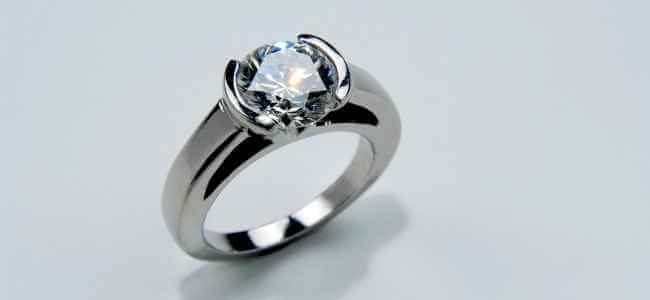
There’s a fairly pervasive myth that diamond engagement rings are “new.” But that’s not true. Diamond engagement rings date back to at least 1477 when the Archduke of Austria proposed to Mary of Burgundy. The engagement ring as we know it likely dates back as far as 850. Diamond has always been a natural choice for engagement rings. Not only are they rare and spectacularly beautiful, but they’re uniquely hardy.
Of course, diamonds did increase in popularity starting in 1947 with the De Beers campaign. “A diamond is forever” became synonymous with the permanency of love, engagement, and marriage. But this was just a single advertising campaign. Diamonds were already very popular for engagement rings even before the De Beers campaign.
Today, diamonds remain exceptionally popular. The only change is that millennials are increasingly trying to purchase conflict-free or lab-created diamonds. Lab-created diamonds aren’t just easier to source, but they also tend to have greater levels of clarity and brilliance.
How Have Diamonds Evolved through the Years?
Initially, there were fairly simple cuts of diamonds. As time has passed, they have become both more ornate and more precise. This has been reflected in changes to engagement rings.
The earliest cuts were table cuts. Table cut diamonds had a large center facet and just a few facets around it. Then there came single-cut diamonds (a little more complex) and rose-cut diamonds (still more complex). Adding more facets to diamonds gave them greater levels of complexity and put larger amounts of light in.
French cuts and Mazarin cuts soon followed, each making diamonds more brilliant and brighter. But as these new cuts were introduced, not all of the prior cuts disappeared. Not only were older diamonds still prized, but the “flash and fire” of a cut wasn’t all that concerned jewelers. Eventually, the Old Mine cut was developed. Old Mine diamonds have the same number of facets as the standard Brilliant Cut diamond — but those facets are positioned differently.
Now the modern, round Brilliant Cut is by far the most popular diamond cut, and the most popular for an engagement ring like a solitaire. There are also cushion cut, marquise cut, and princess-cut diamonds. Today’s diamonds can be cut with far greater precision than ever before, leading to diamonds that are remarkably bright.
Older diamond cuts will never go away, however. Because “diamonds are forever,” there are always diamonds being repurposed from older jewelry, set in newer jewelry, and otherwise reused. Re-cutting a diamond leads to waste and a significant reduction of the stone. So, using older or antique diamond cuts can be a great way for someone to repurpose old jewelry into something brilliant and new.
What About the Colors of Diamonds?
In addition to style, alternative colors of diamond have also become popular. Brown “chocolate” diamonds and pink diamonds have both been trendy. But the public always comes back to the crystal clear simplicity of a transparent diamond.
For an engagement ring, which is supposed to symbolize “eternity” and “forever,” the clear diamond tends to be more highly prized. While other colors of diamond do go in and out of fashion, they tend to not be as long-lasting as the crystal clear, brilliant diamond.
Diamond Alternatives
Lab-grown diamonds have become a popular alternative to mined diamonds. There are also diamond “substitutes” such as the stone moissanite. But many people find that stones such as moissanite are actually too shiny. Similar to cubic zirconia, the amount of fire that they produce can make a piece feel too glaring.
Lab-grown diamonds are an excellent alternative to mined diamonds; they tend to have excellent clarity, fire, and transparency. They are essentially the same as a mined diamond except that the quality is strictly controlled. And those involved can be sure that the diamond is completely conflict-free.
How Have Styles Evolved?
When most people think of a diamond engagement ring, they think of the classic solitaire. A solitaire ring is a ring that has a simple, single band and a large, central stone. This is the best ring if you just want a very large, very heavy diamond.
But there are also other types of rings today. Halo rings have become very popular. They feature a center diamond that has a “halo” of smaller diamonds surrounding it. There are also single-row diamond rings, which have a central diamond and a single row of diamonds across the band. And there are multi-row diamond rings, which have multiple rows of diamonds. And there are bypass rings, which have more ornate bands.
Rings today are both more ornate and more durable. They can be set with far more diamonds because the settings are both stronger and more delicate. Anyone who wants to find the “perfect engagement ring” has an entire assortment to choose from.
Finding the Right Diamond Engagement Ring
How do you find the engagement ring that’s right for you? Finding the right diamond engagement ring is often a matter of going down to a store and trying it out, or customizing a ring and seeing what works best for you. There are different bands (thin to thick, diamond-studded to plain), different stone sizes, and different stone configurations.
The best way to determine which styles you’re interested in is to go through a lot of styles and see what’s most appealing. From there, you can work with a jeweler to customize the ideal ring for you. And you should always ask about guarantees and warranties, so you can protect your investment.
Diamonds are “made” to last. But that doesn’t always say anything about the setting or ring itself. It’s incredibly important to get your rings from a jeweler that produces pieces made to last. Check out the online shop of Occasions Fine Jewelry to learn more.











